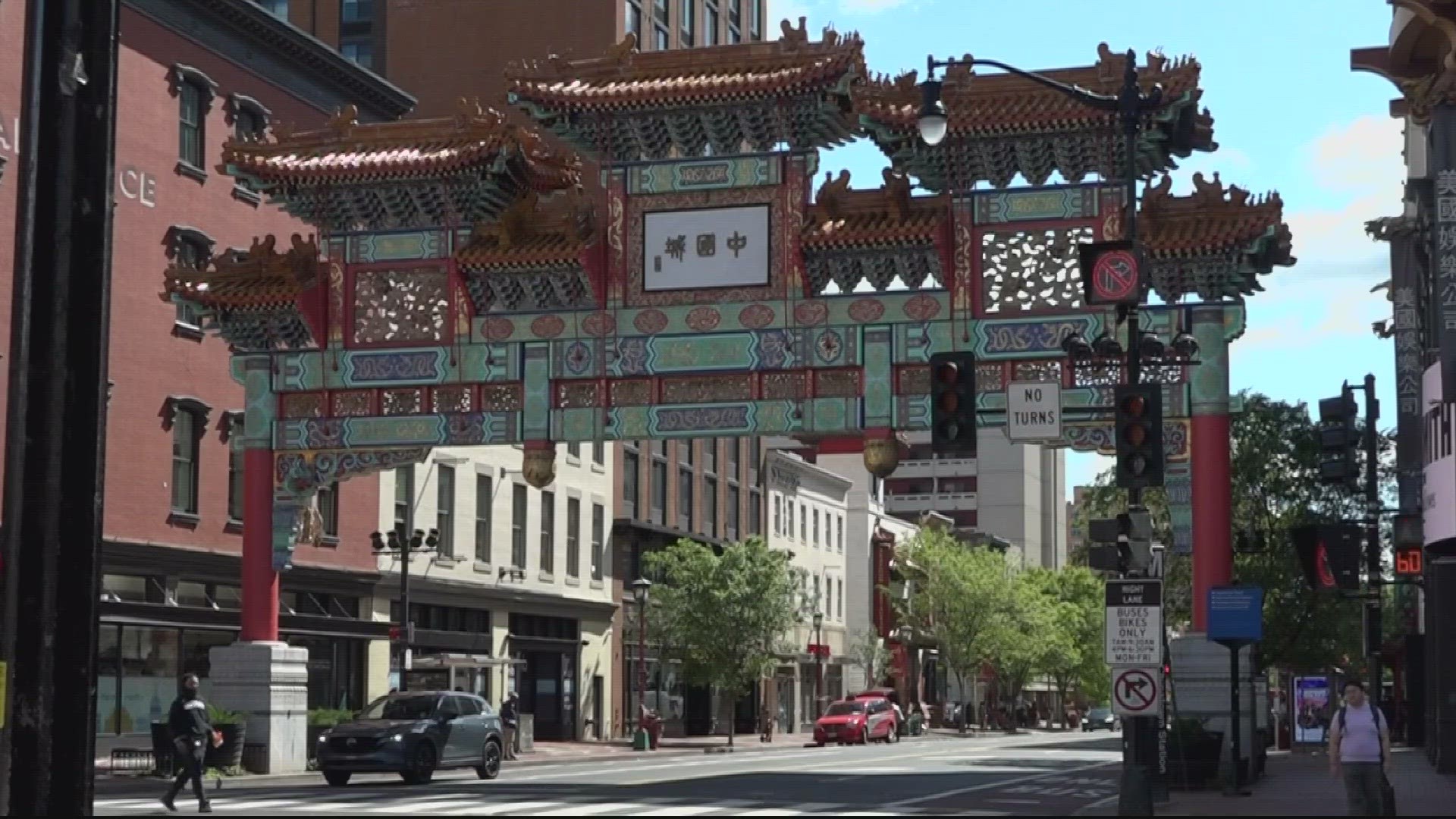WASHINGTON — This month we’re shining a spotlight on the Asian American stories and communities that put our region on the map—and in some cases, are destinations all their own, like Chinatown.
The neighborhood is rich in history, but what does its future look like?
It’s a neighborhood with all the characters a visitor could ask for, but a visitor from New York tells us Washington, D.C.’s Chinatown lacks charm.
“It feels like it's optics more than it is actually authentic Chinese communities,” she said.
It wasn’t always this way. First, safe havens for Chinese immigrants facing racism and exclusion– Chinatowns around the country became cultural gathering places and hotspots. The District’s original Chinatown was torn down to make way for new development, then relocated along several blocks of H street NW. But since the 1960s, downtown crime rates and further big development meant most Chinese residents of the neighborhood had been driven out—by the time the landmark Friendship Archway was built.
“It's changed quite a bit,” admits Ted Gong, executive director of the 1882 Project Foundation.
Today, D.C.’s Chinatown appears to many visitors to be more held together by chains than Chinese-owned or even Chinese centric businesses.
“You think of that negatively. That's true. There are those things," said Gong. "But also it meant that this area has economically grown."
Much of that is because many Chinese residents who once lived in the neighborhood or relied on its shops for the community, provisions, and safety Chinatown once provided have been able to expand into various other communities and because people from all sorts of backgrounds have established a footprint in the increasingly diverse Chinatown streets.
In the shadow of the gate, Gong sees Chinatown at a crossroads.
“The assumption there that you have to preserve Chinatown as it was, historically. That's impossible.”
He leads an organization advocating for more historic commemoration: plaques and markers of the neighborhood’s stories.
“Your museum experience, your education experience begins or is part of walking through,” he said. He describes visions of self-guided walking tours, window displays, and multimedia experiences he says could fit well into, and help bolster Chinatown’s existing landscape.
"Develop a space that allows the people walking by, all those kids coming by here, and just say, hey, pause, take a look at this here. And then the space becomes more than just a place where you walk by, becomes a place where you can stay and enjoy what's happening here."
Along with that, Gong hopes to see more incentives and support of Chinese-owned businesses–especially as many storefronts are boarded up windows.
“[You have buildings with] Chinese characters and put things of this sort, but then you have tax policies or things of this sort that don't allow the businesses really to survive," he said. "But also you have a lot more crime or instability in things. So you have to address those issues first.”
The Downtown Business Improvement District is putting a special focus on the Gallery Place-Chinatown corridor this year.
“The strength is it's multicultural and it's multi-generational, and that is something that we absolutely want to continue to focus on,” said Ella Faulkner with the DowntownDC Business Improvement District.
A study released in February recognizes a need to collaborate with existing business owners, the mayor’s office, law enforcement, and cultural stakeholders to make Chinatown a safer, cleaner experience–that lives up to its name.
"There have been so many trends over the last few years that I think across the country we're seeing in our urban centers just increased challenges around public safety, challenges around homelessness and how we deal with getting people into housing, and some of these things can make the streets really feel a lot different than folks are accustomed to," said Gerren Price, DowntownDC BID's President and CEO. “I think what we see now is sort of this new opportunity to think about how do we move towards the future and increase public safety and perceptions of safety, ensure that we have the kind of street level vibrancy that comes from a more mixed use and vibrant downtown that's full of life and people and residents and transit and all the things that are going to make our downtown really special."
“It is so incredibly important that we make sure that the voices of the Asian-American community are not lost,” he added. "It’s really important that we lean into that and make sure that it's not just the letters on the wall. It has to be a part of the fabric of this area.”
The path forward here, Gong says, could help D.C. all over the map.
“Whether that's U Street or whether that's up in DuPont Circle or up at the Capital Heights, those centers are actually what I think distinguishes the city. And the city takes rightful pride in saying that they illustrate the diversity of the city. The question is, how do you maintain it?”
He hopes the answer here—will be a place worth revisiting.

